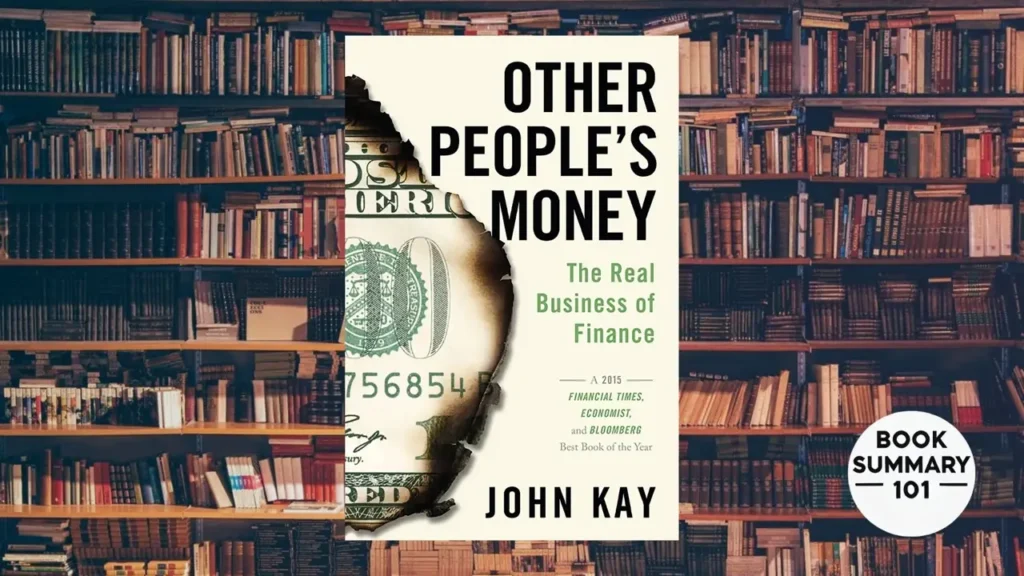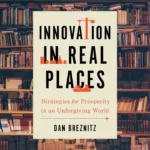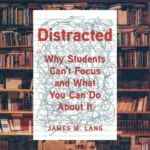Are you ready to pull back the curtain on the world of finance? John Kay’s Other People’s Money is not your typical dry, jargon-filled textbook—it’s an eye-opening exploration of how finance has strayed far from serving the real economy. Kay doesn’t just point fingers; he gives us a roadmap to bring sanity back to the system.
So grab your coffee, and let’s dive into this book that challenges everything you thought you knew about banking, investing, and money itself!
Why Read This Book?
Whether you’re an investor, a professional in the financial industry, or just someone with a savings account, this book matters. Why? Because the financial system doesn’t just impact Wall Street; it’s woven into our lives—from the mortgages we pay to the pensions we rely on.
Kay’s main point is simple yet powerful: finance is supposed to help the economy grow by channeling savings into productive investments. But somewhere along the way, it got sidetracked, becoming a self-serving industry obsessed with complexity, profits, and short-termism.
If you’ve ever wondered why the 2008 financial crisis happened or why finance seems so disconnected from the real world, Other People’s Money breaks it down in a way that’s smart, engaging, and surprisingly funny at times.
Finance Needs a Reality Check and a Reset
John Kay doesn’t hold back: the financial sector has taken a wrong turn. Once a crucial driver of economic growth and innovation, it has morphed into an industry that often serves itself instead of the broader economy. Kay vividly describes the financial world as a “money loop,” where assets are traded, re-traded, and speculated upon without creating meaningful value. Instead of focusing on lending to businesses or fostering innovation, finance has become fixated on quick profits, obscure products, and risky bets.
But this isn’t just a critique—it’s a call to action. Kay outlines a clear, actionable roadmap for how we can rein in the financial sector and steer it back toward its intended purpose: serving the real economy. Here’s a deeper dive into his plan:
Go Back to Basics
At its core, the financial industry exists to do three things:
- Provide Credit: Helping individuals and businesses access the funds they need to grow.
- Manage Risk: Offering tools like insurance to protect against unforeseen events.
- Facilitate Payments: Ensuring smooth transactions in the global economy.
Kay argues that these fundamental functions have been overshadowed by speculative trading, algorithm-driven decision-making, and complex financial products. Instead of innovating in ways that genuinely help people, finance has leaned into creating “solutions” that mostly benefit itself.
For example, consider how banks prioritize trading operations over traditional lending. The result? Small businesses often struggle to secure loans, while banks pour resources into markets that generate higher, faster profits. Kay urges a reset, where these basic, economy-supporting services take precedence once again.
Simplify the System
Modern finance thrives on complexity, but Kay warns that this complexity is often unnecessary and dangerous. Products like derivatives and credit default swaps (which gained notoriety during the 2008 crisis) were designed to manage risk. Yet, they’ve become tools for speculation, creating layers of risk that even the experts sometimes fail to understand.
This complexity doesn’t just increase the likelihood of financial crises—it also makes it harder to hold institutions accountable. Regulators, investors, and even the banks themselves struggle to untangle these intricate products when things go wrong.
Kay’s solution? Simplify. Eliminate financial instruments that don’t contribute to the real economy. Focus instead on straightforward, transparent tools that anyone can understand. When finance is simple, it’s safer and more effective for everyone.
Think Long-Term
Kay is deeply critical of the financial sector’s obsession with short-term gains. Quarterly earnings, daily market movements, and immediate returns dominate decision-making, often at the expense of long-term stability.
This short-sightedness affects more than just the markets—it impacts us all. For example, pension funds may chase high-risk investments to boost short-term performance, jeopardizing the long-term security of retirees. Similarly, companies often cut corners or delay investments in innovation because their stockholders demand instant results.
Kay advocates for a cultural shift. The financial sector must adopt a long-term perspective, prioritizing stability, sustainability, and value creation over quick wins. This means rewarding patience, encouraging investments that take years to bear fruit, and supporting businesses that prioritize innovation and growth over fleeting profits.
Regulate Smartly
Kay doesn’t believe in throwing endless rules at the financial system—he knows that over-complicated regulation often creates as many problems as it solves. Sophisticated financial institutions can exploit loopholes or game the system, leaving regulators perpetually one step behind.
Instead, Kay champions intelligent regulation. This means:
- Focusing on Simplicity: Clear, transparent rules that are easy to enforce.
- Holding Leaders Accountable: Ensuring that those at the top face real consequences for reckless decisions.
- Prioritizing Transparency: Making financial dealings open to scrutiny so risks are visible before they spiral out of control.
Kay uses the example of the 2008 financial crisis to highlight the failure of bloated regulations that didn’t stop banks from taking dangerous risks. He argues that smarter, leaner rules can do more to protect the public and the economy.
Serve the Real Economy
Perhaps the most important point in Kay’s roadmap is this: finance must return to serving the real economy. The purpose of financial institutions is to allocate resources where they are most needed—whether that’s funding small businesses, investing in infrastructure, or helping families buy homes.
Too often, however, finance operates in a bubble, disconnected from the lives of ordinary people. Speculation, high-frequency trading, and exotic financial products may generate profits for a select few, but they do little to improve the lives of most people.
Kay urges financial leaders to reframe their priorities. Instead of chasing profits for profits’ sake, they should channel capital into projects and businesses that create jobs, spur innovation, and address societal challenges. By doing so, finance can regain public trust and truly contribute to the world’s progress.
The Bigger Picture
John Kay’s message is clear: finance is not inherently bad, but it has lost its way. By refocusing on its original mission—serving the economy and improving lives—it can regain its legitimacy and become a force for good.
This isn’t just about fixing a broken system. It’s about ensuring that finance works for everyone, not just the elite. Because at the end of the day, it’s not their money—it’s our money.
Real-Life Examples: The Good, the Bad, and the Ugly
Kay doesn’t just theorize—he backs up his claims with powerful examples.
- The Financial Crisis of 2008: Kay uses the meltdown as Exhibit A, showing how financial firms prioritized risky bets over real-world needs. The subprime mortgage fiasco is a case study in how ignoring long-term consequences can lead to disaster.
- Iceland’s Meltdown: The tiny nation’s banks became global players overnight, only to crash spectacularly. Why? They forgot the fundamentals: finance exists to serve the economy, not itself.
- The British Pension Fund: Kay contrasts reckless financial speculation with how pension funds should operate—focused on security and long-term growth for retirees.
Kay’s Roadmap: How to Fix Finance
While Kay doesn’t sugarcoat the problems, he’s not a doomsayer. He offers practical solutions:
- Go Back to Basics: Financial institutions should return to their roots—providing credit, managing risk, and facilitating payments.
- Simplify: Cut the unnecessary complexity. Most of the modern financial instruments add risk without value.
- Regulate Wisely: Kay isn’t anti-regulation but warns against over-complicated rules that banks can easily game. Instead, focus on transparency and accountability.
- Focus on the Real Economy: Finance should channel resources into businesses that create jobs, innovation, and growth—not endless speculation.
Why This Book Stands Out
John Kay isn’t just another critic of Wall Street. He’s a seasoned economist with decades of experience, and his writing strikes a balance between being deeply insightful and refreshingly accessible.
What makes Other People’s Money special is its refusal to demonize finance entirely. Kay acknowledges the industry’s importance but insists it must serve society—not the other way around.
5 powerful quotes from Other People’s Money: The Real Business of Finance by John Kay
1. “The purpose of finance is to allocate capital, manage risk, and facilitate transactions—not to make bankers rich.”
A no-nonsense reminder that finance should serve the economy, not enrich insiders.
2. “Much of what investment banks do today is trading with each other in complex instruments that have little to do with the real economy.”
Kay calls out the detachment of modern finance from its foundational purpose.
3. “When finance works well, it is a means to an end—not an end in itself.”
This sums up the core argument of the book: finance should enable progress, not become the main attraction.
4. “The modern financial system is like a casino in which we are all forced to play.”
A powerful metaphor showing how financial risk-taking impacts everyone—even those who aren’t willingly involved.
5. “Regulation should be about purpose, not process.”
Kay critiques the over-complication of financial rules and pushes for smarter, more focused oversight.


